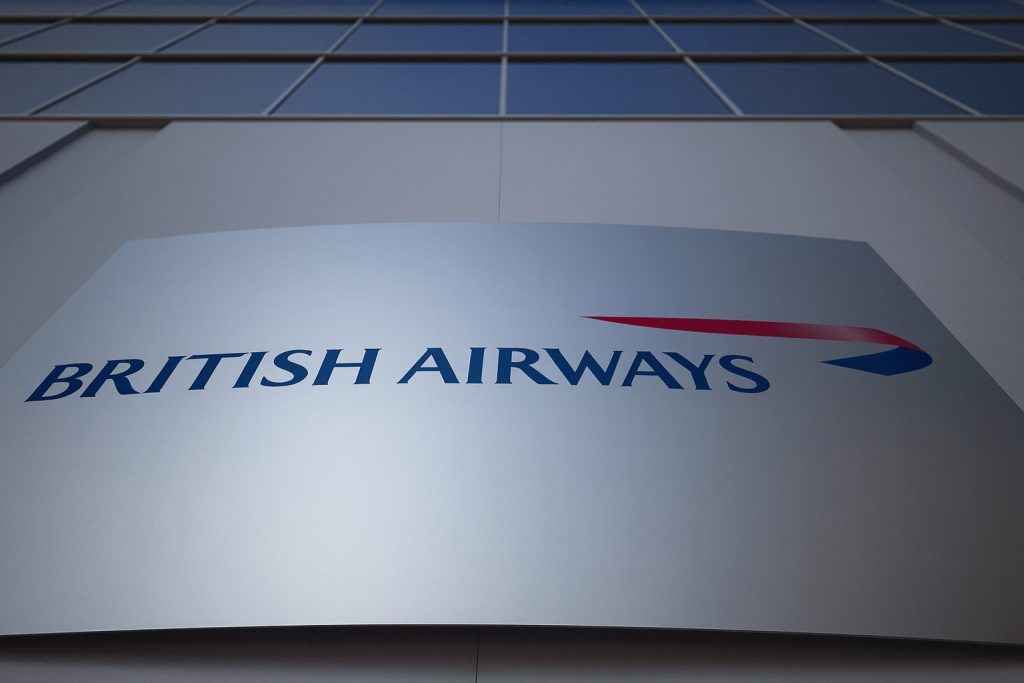Published: 28 November 2025
The Autumn Budget has handed Premium Bonds savers a rare bit of good news – or at least, genuine hope.
Buried in the Budget 2025 documents is a technical but powerful change: National Savings & Investments (NS&I) has been told to raise an extra £1 billion from savers this year, taking its 2025–26 net financing target from £12 billion to £13 billion. [1]
That £1 billion “change” is now rippling through the personal finance world. It’s already triggered higher interest rates on NS&I’s fixed‑term British Savings Bonds – and could put Premium Bonds prize rates in the spotlight next.
Regional outlets and national titles have picked up the story this morning, highlighting a “major £1billion change” and “real hope” for Premium Bonds holders following the Budget. [2]
Here’s what’s actually happening, what might come next, and what it means for your savings today.
What exactly has the government changed?
In Budget 2025, Chancellor Rachel Reeves quietly increased NS&I’s net financing target for 2025–26 to £13 billion, within a range of plus or minus £4 billion. That’s £1 billion more than the £12 billion target set in the Spring Statement. [3]
Net financing is basically the net new money NS&I must deliver to the government after taking account of deposits, withdrawals and prize or interest payments. In the Budget’s financing tables, NS&I is shown as contributing £13 billion towards the UK’s overall cash needs this year, helping to reduce the amount raised via gilt sales and Treasury bills. [4]
NS&I’s own statement on 26 November confirms the move, stressing that:
- The target is now £13bn (+/‑ £4bn) for 2025–26
- It was previously £12bn, and £9bn the year before
- The new target is meant to complement extra gilt issuance by the Debt Management Office (DMO). [5]
Translated: the Treasury wants more cheap, stable funding from ordinary savers, and it’s leaning on NS&I to deliver it.
NS&I’s progress so far: only £3.9bn raised in the first half
So far this financial year (April to September 2025), NS&I has only delivered £3.9 billion of net financing – less than a third of the revised £13bn target. [6]
NS&I’s provisional results show:
- Q1 2025–26 (Apr–Jun): £2.5bn net financing
- Q2 2025–26 (Jul–Sep): £1.4bn net financing
- Total H1 2025–26: £3.9bn net financing
- Customer holdings (“total stock”): about £244bn by the end of September. [7]
That leaves around £9bn still to raise in the second half of the year if NS&I is to hit the new target. In other words, NS&I now has a bigger target and less time to reach it.
Historically, when NS&I has struggled to meet – or been asked to exceed – its financing target, it has responded by making its savings products more attractive, especially on rate‑sensitive accounts and Premium Bonds. [8]
Current NS&I rates: where things stand today
As of 28 November 2025, NS&I’s own rate tables show: [9]
Premium Bonds
- Annual prize fund rate:3.60%, variable
- Odds of winning:22,000 to 1 per £1 Bond
- Tax: All prizes are tax‑free
- Holding limits: £25 minimum, £50,000 maximum
The 3.60% prize fund rate has been in place since the August 2025 draw, following a cut from 3.80% in April and from 4.00% at the start of 2025. [10]
Variable savings accounts
- Direct ISA: 3.50% tax‑free/AER, variable
- Direct Saver: 3.30% gross/AER, variable
- Income Bonds: 3.26% gross / 3.30% AER, variable
- Junior ISA: 3.55% tax‑free/AER, variable. [11]
British Savings Bonds (fixed-term)
NS&I’s fixed‑term “British Savings Bonds” – actually branded Guaranteed Growth Bonds and Guaranteed Income Bonds – saw a sizeable boost on 7 November 2025: [12]
Guaranteed Growth Bonds (Growth option)
- 1‑year: 4.20% gross/AER
- 2‑year: 4.10% gross/AER
- 3‑year: 4.16% gross/AER
- 5‑year: 4.15% gross/AER
Guaranteed Income Bonds (Income option)
- 1‑year: 4.13% gross / 4.20% AER
- 2‑year: 4.03% gross / 4.10% AER
- 3‑year: 4.09% gross / 4.16% AER
- 5‑year: 4.08% gross / 4.15% AER
These increases – around 0.25–0.30 percentage points versus previous issues – were explicitly framed by NS&I as part of its efforts to balance the needs of savers, taxpayers and the wider financial sector, while meeting its financing ambitions. [13]
Why the £1bn change could be good news for Premium Bonds holders
With the target now at £13bn and only £3.9bn raised so far, NS&I faces a choice:
- Either aggressively market existing products at current rates, or
- Sweeten the deal with better returns to pull in more money.
Personal finance commentators are leaning towards the second option – at least in part.
A detailed analysis published on 27 November by MoneyWeek argues that the higher fundraising target “could potentially” force NS&I to raise the Premium Bonds prize fund rate to attract fresh inflows. The piece notes that NS&I can now raise up to £17bn within its new +/- £4bn range, but has so far raised just £3.9bn, leaving “more than £9bn” still to find. [14]
Two recurring themes from that commentary and others:
- The government needs more from savers
Analysts see the uplift in NS&I’s target as a clear signal that the Treasury wants to lean harder on retail deposits rather than relying solely on wholesale gilt markets. [15] - Higher NS&I rates are the obvious lever
Experts from Hargreaves Lansdown and AJ Bell told MoneyWeek that when funding targets rise, NS&I’s usual response is to make its products “more appealing”, either by raising interest rates or, in the case of Premium Bonds, increasing the prize fund rate. [16]
A paywalled report in The Telegraph echoes that view, noting that Premium Bonds rates “could rise” after Rachel Reeves signalled that she wants another £1bn from savers to support the public finances. [17]
Today’s regional coverage: “real hope” and “prizes alert”
On Friday 28 November, the story has filtered through to regional and consumer news sites:
- Daily Post reports that the Premium Bonds £1 billion change provides “real hope” for holders.
- Leicester Mercury and other local outlets describe a “prizes alert” and a “major £1billion change”, linking it directly to NS&I’s raised target and the possibility of better returns. [18]
While the full articles sit behind robots.txt barriers online, the visible headlines and summaries make clear that the focus is on how this extra £1bn of fundraising could feed through into Premium Bonds prizes and savings rates – not on cuts.
In other words, the regional framing is broadly optimistic for savers.
Will Premium Bonds prize rates actually rise?
There are three moving parts here:
- The fundraising gap
NS&I has £9bn‑plus to raise in just six months. If inflows don’t accelerate, the pressure to tweak pricing will grow. [19] - The existing rate advantage
Even at a 3.60% prize fund rate, Premium Bonds already lag the very best easy‑access savings accounts but are still competitive with many high‑street offers – especially once the tax‑free status is factored in. [20] - The wider interest‑rate environment
Markets expect the Bank of England to begin cutting base rates as inflation continues to cool into 2026, which would normally put downward pressure on savings deals. [21]
That tension explains why expert opinion is split:
- Some analysts think NS&I might hold Premium Bonds at 3.60%, relying instead on its newly boosted British Savings Bonds (4.20%+ fixed) to do the heavy lifting. [22]
- Others argue there is still “a chance” that NS&I edges the prize fund rate higher for at least a few draws, if inflows remain behind schedule. [23]
Important: as of this morning, NS&I has not announced any Premium Bonds rate rise. The current 3.60% prize fund and 22,000‑to‑1 odds remain in place for upcoming draws. [24]
How the £1bn change affects different types of saver
1. Premium Bonds holders
For existing Premium Bonds customers, the £1bn uplift is essentially a signal:
- The government wants more funding via NS&I
- NS&I historically uses prize rate increases to attract that money when needed
- Multiple outlets are now describing the situation as “real hope” that returns may improve. [25]
Even if the prize fund rate doesn’t move, the raised target makes it less likely we’ll see sharp cuts to Premium Bond returns in the near term – especially while NS&I still needs to chase inflows.
2. Savers eyeing fixed‑term deals
The clearest immediate winner from the current shake‑up is anyone considering a 1–5 year fixed rate with NS&I:
- British Savings Bonds now pay 4.10–4.20% fixed, backed by a 100% HM Treasury guarantee – more generous than they were just a few weeks ago. [26]
That’s attractive for cautious savers who:
- Want a guaranteed rate
- Are comfortable tying money up (no early access)
- Value NS&I’s full government backing over the £85,000 FSCS limit most banks offer. [27]
3. Easy‑access and ISA savers
For users of Direct Saver, Income Bonds or Direct ISA, the Budget‑linked story hasn’t yet translated into fresh rate rises. Those accounts continue to pay between 3.26% and 3.55%, with adjustments in late 2024 and early 2025 having already nudged them down from prior peaks. [28]
If NS&I still needs to make up a lot of ground later in the year – and Premium Bonds remain untouched – these accounts could be candidates for future incremental rate bumps.
Practical takeaways for savers (without giving personal advice)
Everyone’s circumstances are different, so this isn’t personalised financial advice. But based on what we know today:
- Premium Bonds: enjoy the hope, don’t bank on a rise
The £1bn uplift and the commentary around it genuinely improve the odds of a future prize fund rate increase, but nothing is guaranteed. Premium Bonds remain a lottery‑style product, not a fixed‑rate savings account. [29] - Check NS&I’s fixed‑rate bonds against the wider market
The new 4.20%‑range British Savings Bonds are competitive, especially given the 100% government guarantee, but you should still compare them with the best current‑account, ISA and fixed‑rate deals elsewhere before locking money away. [30] - Watch the December Bank of England meeting
If the Monetary Policy Committee does cut interest rates in December, as many expect, we could see commercial banks trimming rates in 2026. In that scenario, NS&I’s relatively generous fixed rates – and any potential Premium Bonds uplift – might not last long. [31] - Keep an eye on NS&I announcements
Given the new target, any NS&I press release mentioning “Premium Bonds prize fund rate” or “new rates” in the coming months will be worth close attention. NS&I typically gives savers clear notice of changes before a future draw date. [32]
What happens next?
From here, the key milestones to watch are:
- Early December 2025: Bank of England interest‑rate decision
- Monthly Premium Bond prize draws: any announcement of a new prize fund rate would normally be tied to a future draw date (for example, “from the March draw”). [33]
- NS&I’s Q3 2025–26 results (early 2026): these will show how much extra money the November rate rises and Budget publicity have actually pulled in – and whether NS&I is on track for the £13bn target. [34]
References
1. www.gov.uk, 2. www.finanzen100.de, 3. www.gov.uk, 4. www.gov.uk, 5. nsandi-corporate.com, 6. nsandi-corporate.com, 7. nsandi-corporate.com, 8. nsandi-corporate.com, 9. www.nsandi.com, 10. www.nsandi.com, 11. www.nsandi.com, 12. nsandi-corporate.com, 13. nsandi-corporate.com, 14. moneyweek.com, 15. www.gov.uk, 16. moneyweek.com, 17. www.telegraph.co.uk, 18. www.finanzen100.de, 19. nsandi-corporate.com, 20. www.nsandi.com, 21. moneyweek.com, 22. moneyweek.com, 23. moneyweek.com, 24. www.nsandi.com, 25. nsandi-corporate.com, 26. nsandi-corporate.com, 27. www.nsandi.com, 28. www.nsandi.com, 29. moneyweek.com, 30. nsandi-corporate.com, 31. moneyweek.com, 32. www.nsandi.com, 33. moneyweek.com, 34. nsandi-corporate.com










